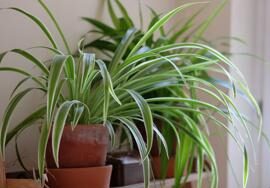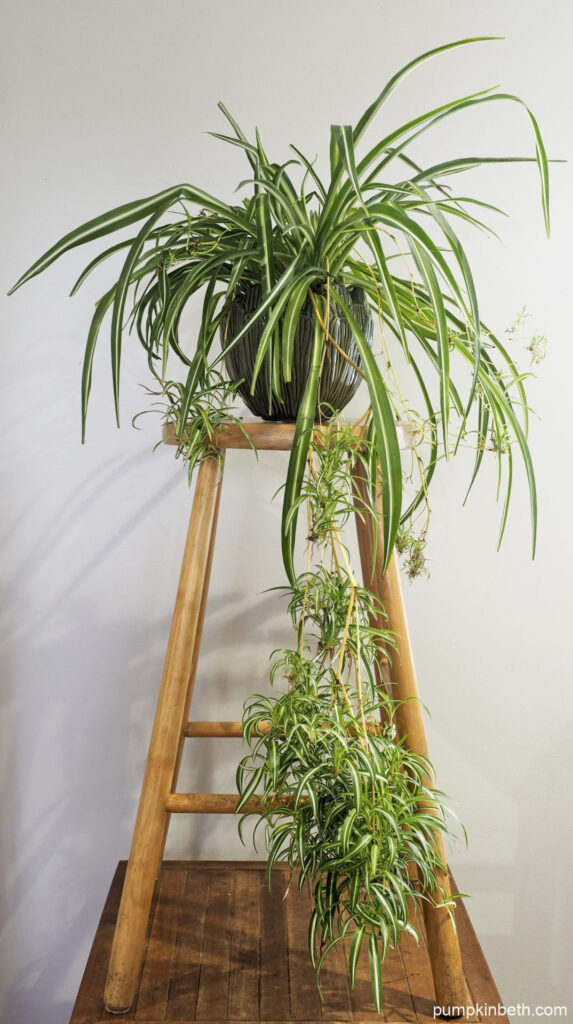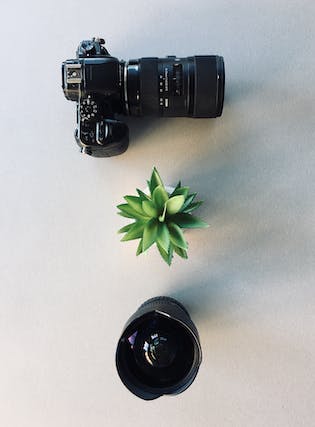How to Keep Your Spider Plant Healthy and Happy

Introduction to Chlorophytum comosum
Chlorophytum comosum, known as the Spider Plant. It is a plant has been displayed in homes and offices for decades. This plant is known for its attractive arching leaves. It produces charming plantlets, often called “spiderettes.”
What is a Spider Plant?
Chlorophytum comosum is an evergreen perennial flowering plant. It belongs to the Asparagaceae family. It’s characterized by its long, narrow, and arching leaves that grow from a central rosette. The leaves can be solid green or variegated with white or yellow stripes.
One feature of the Spider Plant is its ability to produce long, wiry stems (stolons). They bear small plantlets at their tips. These baby plants, hanging from the mother plant, give it the appearance of a spider, hence its common name.
Origin and Natural Habitat
Spider Plants are native to tropical and southern Africa. It grows in South Africa, Zimbabwe, and Mozambique. They are found growing as understory plants in forests or on rocky outcrops.
Chlorophytum comosum has adapted to grow in partial shade. It often receives dappled sunlight filtered through the canopy of larger trees. This adaptation makes them particularly well-suited to indoor environments. They can thrive in the moderate light conditions typical of many homes and offices.
Why are they called Spider Plants?
The name “Spider Plant” comes from the plant’s unique growth habit:
- Arching leaves: The long, thin leaves that arch outwards from the center. They resemble spider legs.
- Dangling plantlets: Small baby plants that hang from thin stems. They look like spiders suspended on silk threads.
- Web-like appearance: When grown it has many plantlets. The effect can resemble a network of spiders and webs.
Spider Plants have nothing to do with actual spiders and are completely harmless.
Chlorophytum comosum has gained popularity as a houseplant for several reasons:
- Easy care: They are low-maintenance and forgiving of occasional neglect.
- Air purifying: Spider Plants can help remove indoor air pollutants.
- Rapid growth: They grow quickly and easily propagate.
- Adaptability: Spider Plants can thrive in a variety of indoor conditions.
We’ll explore the various aspects of Spider Plant care, and cultivation techniques. Chlorophytum comosum is an excellent choice that can bring a touch of green life to any space.
Benefits of Growing Spider Plants
They offer many benefits that make them an excellent choice.
Air purification properties
One of the most notable benefits of Spider Plants is their ability to purify indoor air. NASA’s Clean Air Study, investigated ways to clean air in space stations. The study found that it is effective at removing common indoor air pollutants:
- Formaldehyde: Found in many household products, including paper bags, waxed papers, facial tissues, and paper towels.
- Xylene: Present in rubber, leather, and print materials.
- Carbon monoxide: A dangerous gas produced by combustion.
- Benzene: Found in plastics, resins, and synthetic fibers.
Spider Plants work to purify air through several mechanisms:
- Absorption: They absorb harmful gases through their leaves.
- Breakdown: The plant’s root system helps break down these pollutants.
- Release: They release clean oxygen back into the environment.
Low maintenance houseplant
Spider Plants are known for their easy care requirements. It is ideal for:
- Busy individuals
- Those new to plant care
- Offices or public spaces
Chlorophytum comosum is low maintenance:
- Drought tolerant: Can survive occasional neglect in watering.
- Adaptable to light conditions: Thrives in indirect light and lower light levels.
- Resilient: Bounces back from stress or neglect.
- Few pest problems: Resistant to many common houseplant pests.
- Easy propagation: Produces offspring, making it simple to expand your collection.
Safe for pets and children
Spider Plants are non-toxic. This makes them an excellent choice for households with pets or young children.
- ASPCA approved: Lists it as non-toxic to pets.
- Child-Friendly: Accidental ingestion isn’t likely to cause serious harm.
“Spider Plants are non-toxic to humans and animals. They are safe choice for homes with curious pets or children.” – American Society for the Prevention of Cruelty to Animals (ASPCA)
More Benefits
- Humidity boosters: Spider Plants release moisture into the air. It helps improve indoor humidity levels.
- Stress reduction: Interacting with indoor plants can reduce psychological and physiological stress.
- Aesthetic appeal: The cascading leaves and plantlets add visual interest to any space.
- Educational tool: The propagation process makes it great for teaching plant life cycles.
- Cost-effective decor: One plant can lead to many.
Practical applications
Spider Plants are used in various ways to maximize their benefits:
- Bedroom plants: Their air-purifying qualities can contribute to better sleep environments.
- Office plants: Low maintenance and air-cleaning properties make them ideal for workspaces.
- Bathroom greenery: They thrive in humid environments, making them perfect for bathrooms.
- Natural room dividers: They can serve as beautiful living space separators.
Spider Plant Care Guide
Proper care is essential for maintaining healthy and vibrant Chlorophytum comosum plants. This guide will cover all aspects of Spider Plant care. It ensures your plants thrive and continue to beautify your space.
Light Requirements
Chlorophytum comosum is adaptable to various light conditions. Providing the right amount of light is important for proper growth.
Ideal light conditions for Chlorophytum comosum
- Bright, indirect light: This is the optimal condition for Spider Plants. Place them near east or north-facing windows for the best results.
- Filtered sunlight: If near or facing windows, use sheer curtains to filter sunlight.
- Artificial light: Spider Plants can thrive under fluorescent lights. They are excellent office plants.
Best practices:
- Rotate your plant to ensure even growth.
- Watch for signs of too much light (bleached leaves) or too little light (loss of variegation).
- Keep plants about 3-6 feet away from windows to avoid direct sunlight exposure.

Can Spider Plants tolerate low light?
While Chlorophytum comosum can survive in low light conditions, they may not thrive:
- Growth impact: Low light can result in slower growth and less vibrant foliage.
- Variegation loss: Variegated varieties may lose their distinctive patterns in insufficient light.
- Reduced plantlet production: Plants in low light may produce fewer or no plantlets.
If you must keep your Spider Plant in a low-light area:
- Choose a solid green variety, as they’re more tolerant of lower light levels.
- Consider supplementing with artificial grow lights.
- Move the plant to a brighter spot to help it rejuvenate.
Watering Needs
Proper watering is crucial for the health of your Chlorophytum comosum. Spider Plants prefer to be moist but are tolerant of occasional dry spells.
How often to water Spider Plants
The frequency of watering depends on several factors:
- Light exposure
- Temperature
- Humidity
- Pot size and type
- Season (growth vs. dormancy)
General watering guidelines:
- Water when the top 1-2 inches of soil feel dry.
- In spring and summer (active growth), this might mean watering once a week.
- In fall and winter (dormancy), reduce watering to every 2-3 weeks.
Pro tip: Use the weight of the pot as an indicator. Lift the pot when watered to get a sense of its weight when moist. When it feels lighter, it’s time to water again.
Soil and Fertilizer
The right soil mix and proper fertilization is crucial for health and growth. Let’s explore the best practices for both aspects.
Best soil mix for Chlorophytum comosum
Spider Plants prefer a well-draining, acidic to neutral soil with a pH range of 6.0 to 7.2. The soil mix should keep moisture while allowing excess water to drain.
Recommended soil mix:
- 2 parts all-purpose potting soil
- 1 part perlite or coarse sand
- 1 part peat moss or coco coir
This mix provides:
- Good drainage: Prevents water-logging and root rot
- Adequate aeration: Allows roots to breathe and grow
- Moisture retention: Holds enough water for the plant between watering
DIY soil mix tips:
- Mix ingredients well before potting.
- Avoid garden soil, which can be too heavy and may contain pests or diseases.
- If using a potting mix, choose one labeled for indoor plants or African violets.
Fertilizing frequency and type
The Chlorophytum comosum isn’t a heavy feeder. Regular fertilization during the growing season promotes healthier growth and more vibrant foliage.
Fertilizing schedule:
- Growing season (spring and summer): Feed every 2-4 weeks
- Dormant season (fall and winter): Reduce or stop fertilizing
Best fertilizer types for Spider Plants:
- Balanced liquid fertilizer: Use a 10-10-10 or 20-20-20 NPK ratio. Dilute it to half strength.
- Slow-release pellets: Apply once at the beginning of the growing season.
- Organic options: Compost tea or worm castings can provide gentle, natural nutrition.
Fertilizing best practices:
- Always water the plant before fertilizing to prevent root burn.
- Apply fertilizer to moist soil, not dry soil.
- Avoid fertilizing repotted plants for at least a month.
- If leaves start to brown at the tips, you may be over-fertilizing. Flush the soil with water and reduce fertilization.

“Remember, it’s better to under-fertilize than over-fertilize. Chlorophytum comosum can thrive with minimal supplemental feeding.”
Temperature and Humidity
Spider Plants are adaptable to a range of indoor conditions. Providing optimal temperature and humidity will ensure they thrive.
Optimal temperature range for Spider Plants
Chlorophytum comosum prefers moderate temperatures:
- Ideal daytime temperature: 70°F to 90°F (21°C to 32°C)
- Ideal nighttime temperature: 55°F to 65°F (13°C to 18°C)
- Minimum temperature: 35°F (2°C) – They can survive near-freezing temperatures. It may suffer damage.
Temperature considerations:
- Avoid placing plants near drafty windows or doors in winter.
- Keep away from heating vents or radiators. They can cause dry air and temperature fluctuations.
- In sunny climates, provide some afternoon shade if plants are outdoors.
Humidity preferences and tips
Spider Plants are native to tropical regions. The plant appreciates moderate to high humidity levels. They’re quite adaptable to average indoor humidity.
Ideal humidity range: 40% to 80%
Signs of low humidity:
- Brown leaf tips
- Curling leaves
- Slow growth
Methods to increase humidity:
- Misting: Spray the leaves with water 1-2 times a week.
- Pebble tray: Place the pot on a tray filled with pebbles and water.
- Humidifier: Use a room humidifier near the plant.
- Grouping plants: Cluster several plants together to create a microclimate.
Humidity tips:
- Increase humidity slow to avoid shocking the plant.
- Ensure good air circulation to prevent fungal issues in high humidity.
- In dry environments, consider placing Spider Plants in humid areas. Place it in bathrooms or kitchens.
Pruning and Maintenance
Regular pruning and maintenance are essential for your Chlorophytum comosum. Proper care will ensure your Spider Plant thrives and produce new growth.
When and how to prune Spider Plants
Pruning helps maintain the plant’s shape, removes damaged parts, and encourages new growth. Here’s when and how to prune your Spider Plant:
When to prune:
- Spring or early summer (beginning of the growing season)
- Any time you notice dead, damaged, or yellowing leaves
- When the plant becomes too large
How to prune:
- Use clean, sharp scissors or pruning shears to avoid damaging the plant.
- Cut yellowing or brown leaves at the base where they meet the main plant.
- Remove entire stems if they’re damaged or if the plant is too crowded.
- Trim off spent flower stalks after blooming.
Pruning tips:
- Sterilize your tools with rubbing alcohol. Use it before and after pruning to prevent disease spread.
- Don’t remove more than 1/3 of the plant’s foliage to avoid stress.
- Consider pruning in stages if significant reduction is needed.

Propagating Spider Plants from spiderettes
Spiderettes are small plants that grow on long, arching stems (stolons). They’re easy to root and establish as new plants.
When to propagate:
- When spiderettes have developed several small leaves and visible root nodes
- Spring or early summer for best results.
Steps for propagation:
- Choose a healthy spiderette with several leaves and visible aerial roots.
- Cut the stolon about 2 inches from the spiderette using clean scissors.
- Remove any leaves near the base of the spiderette to expose the root nodes.
Water propagation vs. soil propagation
Both methods can be successful, but each has its advantages:
Water propagation:
- Place the spiderette in water, and cover the root nodes.
- Change the water every few days to keep it fresh.
- Once roots are 1-2 inches long (usually 1-2 weeks), transplant to soil.
Advantages:
- You can observe root development
- Reduces the risk of the cutting drying out
Soil propagation:
- Fill a small pot with a well-draining potting mix.
- Make a hole in the soil and insert the spiderette, cover the root nodes.
- Keep the soil moist until new growth appears.
Pro tip: You can root the spiderette while it’s still attached to the mother plant. Once it has established roots, cut it free and pot it up.
Common Spider Plant Problems and Solutions
Pests
Spider Plants are resistant to pests, and sometimes fall victim to common insects.
Spider mites, mealybugs, and other common pests
- Spider Mites
- Signs: Tiny webbing on leaves, stippling (small yellow or white spots) on leaves
- Treatment:
- Increase humidity (spider mites prefer dry conditions)
- Wipe leaves with a damp cloth
- Use neem oil or insecticidal soap
- Mealybugs
- Signs: White, cottony masses in leaf axils or under leaves
- Treatment:
- Remove visible bugs with a cotton swab dipped in rubbing alcohol
- Apply neem oil or insecticidal soap
- Aphids
- Signs: Small, pear-shaped insects clustered on new growth
- Treatment:
- Rinse off with a strong stream of water
- Apply insecticidal soap or neem oil
- Scale insects
- Signs: Small, brownish bumps on stems or leaves
- Treatment:
- Scrape off visible scale with a soft brush
- Apply horticultural oil or neem oil
Natural and chemical pest control methods
Natural methods:
- Neem oil: A natural insecticide that disrupts pest feeding and breeding
- Insecticidal soap: Kills soft-bodied insects on contact
- Diatomaceous earth: Sprinkle on soil to deter crawling insects
- Beneficial insects: Introduce ladybugs or lacewings to control aphids and mites
Chemical methods:
- Systemic insecticides (for severe infestations)
- Pyrethrin-based sprays
Important: Always use the least toxic method and follow product instructions. Test any treatment on a small area before applying to the whole plant.

Conclusion
Spider Plants are an exceptional choice for novice and experienced plant enthusiasts. Resilience, air-purifying, and striking appearance make it valuable to any indoor space.
Key takeaways for successful Spider Plant care include:
- Providing bright, indirect light
- Watering but allowing the soil to dry between waterings
- Using well-draining soil and ensuring proper drainage
- Maintaining moderate humidity levels
- Regular but careful fertilization during the growing season
Each plant is unique, you may need to adjust your care routine. Your Chlorophytum comosum will communicate its needs through its appearance and growth patterns.
